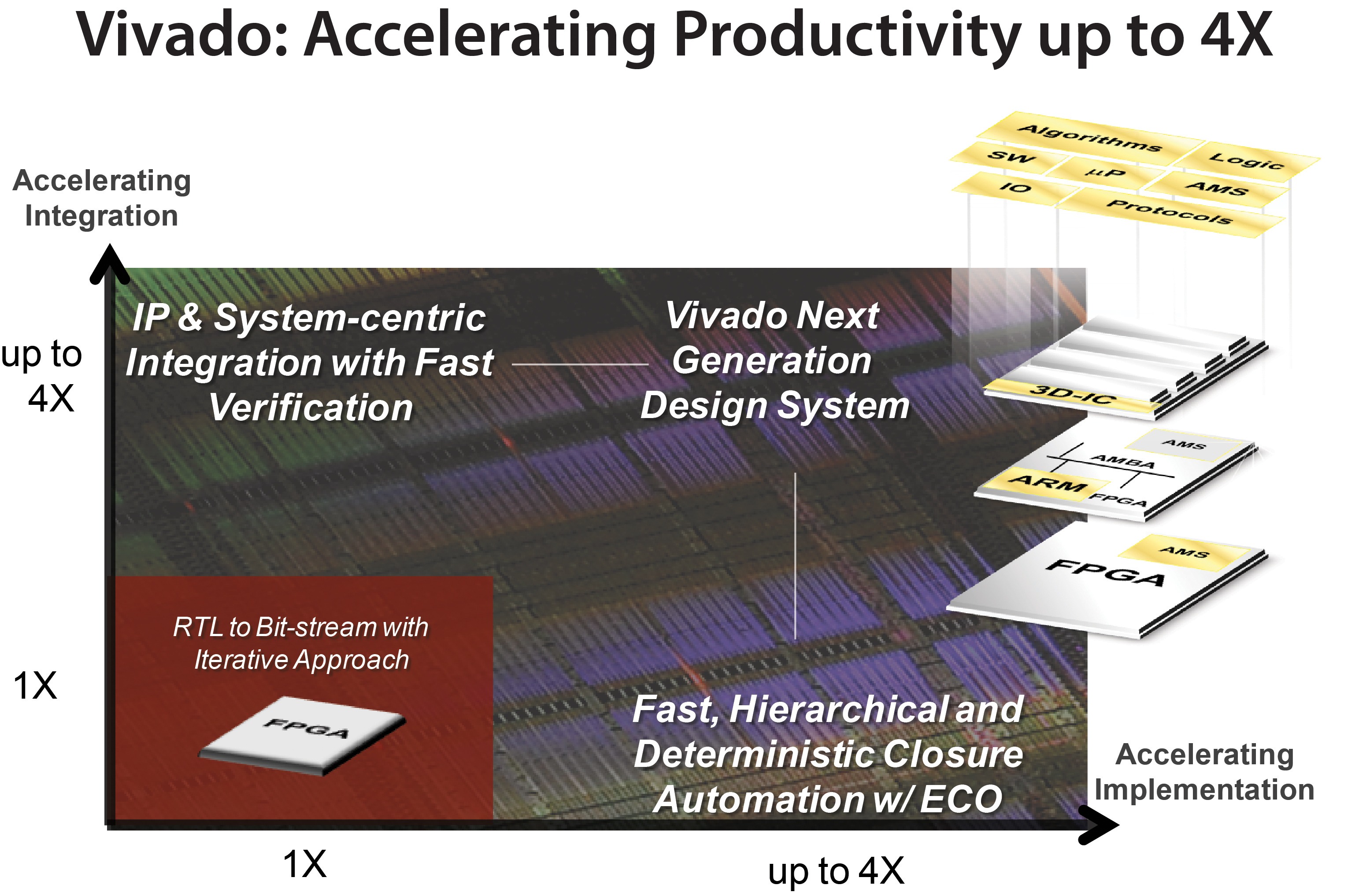Designing FPGAs Using the Vivado Design Suite 2
Course Description
This course shows you how to to build an effective FPGA design using synchronous design techniques. Using the Vivado® IP integrator to create a sub-system and using proper HDL coding techniques to improve design performance. How to debugging a design with multiple clock domains.
 Level
Level
FPGA 2
Course Duration
2 days
Who Should Attend?
Digital designers who have a working knowledge of HDL (VHDL or Verilog) and who are new to Xilinx FPGAs.
Prerequisites
- Basic knowledge of the VHDL or Verilog language
- Digital design knowledge
Recommended Recorded Videos
- Designing FPGAs Using the Vivado Design Suite 1 course
- Working HDL knowledge (VHDL or Verilog)
- Digital design experience
Optional Videos
Software Tools
- Vivado System Edition 2016.3
Hardware
- Architecture: UltraScale™ and 7 series FPGAs*
- Demo board (optional): Kintex® UltraScale FPGA KCU105 board or Kintex-7 FPGA KC705 board*
* This course focuses on the UltraScale and 7 series architectures. Check with your local Authorized Training Provider for the specifics of the in-class lab board or other customizations.
Skills Gained
After completing this comprehensive training, you will have the necessary skills to:
- Build resets into your system for optimum reliability and design speed
- Take advantage of the Xilinx UltraScale FPGA resources
- Build custom IP with the IP Library utility
- Apply basic timing constraints (create_clock, set_input_delay, and set_output_delay)
- Use the primary Tcl-based reports (check_timing, report_clock_interaction, report_clock_networks, and report_timing_summary)
- Identify synchronous design techniques
- Describe how an FPGA is configured
Course Outline
Day 1
- UltraFast Design Methodology Introduction 2 {Lecture, Lab}
- Scripting in a Vivado Design Suite Project-Based Flow {Lecture, Lab}
- Clocking Resources {Lecture, Lab}
- Synchronous Design Techniques {Lecture}
- Register Duplication {Lecture}
- Resets {Lecture, Lab}
- I/O Logic Resources {Lecture}
- Timing Summary Report {Lecture, Demo}
- Introduction to Timing Exceptions {Lecture, Lab, Demo}
Day 2
- Generated Clocks {Lecture, Demo}
- Applying Clock Groups Constraints {Lecture, Demo}
- Creating and Packaging Custom IP {Lecture, Lab}
- Using an IP Container {Lecture, Demo}
- Designing with IP Integrator {Lecture, Lab, Demo}
- Introduction to the HLx Design Flow {Lecture, Lab, Demo}
- Configuration Process {Lecture}
- Sampling and Capturing data in multiple clock-domains in VLA {Lecture, Lab}
- Design Analysis Using Tcl Data Structures {Lecture, Lab}
- Power Analysis and Optimization Using the Vivado Design Suite {Lecture, Lab}
Topic Descriptions
Day 1
- UltraFast Design Methodology Introduction 2 – Overview of the methodology guidelines covered in this course.
- Scripting in a Vivado Design Suite Project-Based Flow. – Explains how to write Tcl commands in the project-based flow for a design.
- Clocking Resources – Describes various clock resources, clocking layout, and routing in a design.
- Synchronous Design Techniques – Introduces synchronous design techniques used in an FPGA design.
- Register Duplication – Use register duplication to reduce high fanout nets in a design.
- Resets – Investigates the impact of using asynchronous resets in a design.
- I/O Logic Resources – Overview of I/O resources and the IOB property for timing closure.
- Timing Summary Report – Use the post-implementation timing summary report to sign-off criteria for timing closure.
- Introduction to Timing Exceptions – Introduces timing exception constraints and applying them to fine tune design timing.
Day 2
- Generated Clocks – Use the report clock networks report to determine if there are any generated clocks in a design.
- Applying Clock Groups Constraints – Apply clock groups constraint for asynchronous clock domains.
- Creating and Packaging Custom IP – Create your own IP and package and include it in the Vivado IP catalog.
- Using an IP Container – Use a core container file as a single file representation for an IP.
- Designing with IP Integrator – Use the Vivado IP integrator to create the uart_led sub-system.
- Introduction to the HLx Design Flow.– Use the HLx design flow to increase productivity and reduce run time when designing and verifying a design.
- Configuration Process – Understand the FPGA configuration process, such as device power up, CRC check, etc.
- Sampling and Capturing Data in Multiple Clock Domains in VLA.– Overview of debugging a design with multiple clock domains that require multiple ILAs.
- Design Analysis Using Tcl Data Structures – Analyze a design using Tcl commands.
- Power Analysis and Optimization Using the Vivado Design Suite – Use report power commands to estimate power consumption.

Datum
19 januari 2017 - 20 januari 2017
Locatie
Core|Vision
Cereslaan 24
5384 VT
Heesch
Prijs
€ 0,00
of
18 Xilinx Training Credits
Informatie
Training brochure
Registratieformulier
Registratie op aanvraag, neem contact op met ons.
